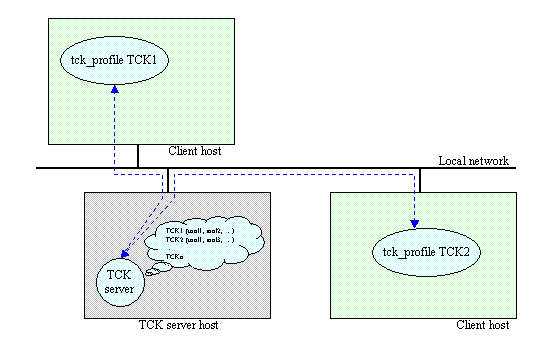
RADE |
Environment Manager |
Introducing TCKWhat is the purpose of "Tool Configuration Key"? |
| Technical Article | ||
AbstractTCK stands for Tool Configuration Key
and is a label for identifying the installation of one tool or a set of
tools. |
A TCK is a string used for registering a new level of tools and for referencing these tools afterwards.
The TCK corresponding to the installation of a CAA V5 Development Toolkit is something like V5Rn_SPm where n is the release number (4, 5, ...) and m is the Service Pack number (1, 2, ...).
[Top]
If you intend to work either in a shell window (on UNIX platform) or in a command window (on Windows-NT platform), you must execute the tck_init profile and then execute the tck_profile command specifying the TCKcorresponding to the tool level you want to use. In this case, please read the paper "Getting access to CAA V5 Tools".
If you intend to work on Windows-NT platform using the CAA V5 Visual Builder Tool (plugged into Microsoft Developer Studio) then the tck_init and tck_profile commands are automatically called when opening a V5 Workspace.
[Top]
As explained above, each CAA V5 Development Toolkit installation is
identified by a label known as a TCK.
If several installations are performed on the same machine, the installation
program looks for existing TCKs and register them in the new installation. By
the way, you can have several versions of tools installed on a machine and
choose each of them by just specifying the associated TCK.
[Top]
Another interesting point is that the registration of CAA V5 tools is done using TCK commands and that these commands are available for any users. By the way it is possible to add personal tools' profiles in existing TCKs and then to have only one command to run for setting up a working environment. Please consult the paper "Using TCKs for accessing tools" to learn more about these functionalities.
It is also possible to create new TCKs from scratch.
[Top]
The default proposed when downloading a CAA V5 Development Toolkit CDROM is to use TCKs without any TCK server. In this case all information are found on the local machine.
It is possible to install a TCK server on a given machine whose purpose will be to gather all the TCKs corresponding to various tools on the local network. When using a TCK server, all the other machines own a TCK client installation allowing them to remotely access information managed by the TCK server. TCK can be created, modified, listed or removed from any machine on the local network.

[Top]
Any CAA V5 Development Tookit installation is identified by a label known as a TCK; tck_init and tck_profile are the two commands to know for accessing CAA V5 tools.
If you are working through the CAA V5 Visual Builder Toolkit on Windows-NT, these commands are automatically called for setting up your environment and you don't need to learn them.
[Top]
| Version: 1 [Mar 2000] | Document created |
| [Top] | |
Copyright © 2000, Dassault Systèmes. All rights reserved.